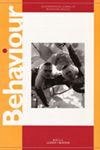描述大型掠食性鲨鱼复杂行为的历史方法——案例研究2:白鲨Carcharodon carcharias
IF 1
4区 生物学
Q4 BEHAVIORAL SCIENCES
引用次数: 0
摘要
一个历史案例,案例研究2,是说明鲨鱼在自然环境中相互作用复杂性的两个案例之一。有证据表明,白鲨是一种选择性的进食者,食用脂肪含量高的海豹和海狮,但拒绝脂肪含量低的鹈鹕、人类和海獭。在咬伤海豹后,这些鲨鱼会在水下长时间将它们夹在嘴里,通过失血(即放血)杀死它们。当剩下的海豹漂浮到水面时,多条鲨鱼争相捕食。鲨鱼执行甩尾动作,包括抬起尾鳍并向伴随的鲨鱼泼水。只有当海豹拍打尾巴的力度和频率大于对手时,战斗人员才能进一步捕食海豹。因此,这是一场令人痛苦的展示,起到了抵御潜在竞争对手的作用。本文章由计算机程序翻译,如有差异,请以英文原文为准。
A historical approach to describing the complex behaviour of a large species of predatory shark — case study 2: the white shark, Carcharodon carcharias
A historical example, case study 2, is one of two cases illustrating the complexity of interactions between sharks in their natural environment. Evidence is presented that the white shark is a selective feeder, consuming seals and sea lions with high fat content yet rejecting a pelican, human, and sea otters with low fat content. After biting seals, these sharks carry them in their jaws for a prolonged time underwater to kill them through blood-loss, i.e., exsanguination. Multiple sharks compete to feed on the remaining seal carcass when it floats to the surface. The sharks perform the Tail Slap, consisting of lifting the caudal fin and splashing water toward the accompanying shark. A combatant is permitted to feed further on a seal only if the vigor and frequency of its tail slaps are greater than those of its opponent. Thus, this is an agonistic display, functioning to ward off potential competitors.
求助全文
通过发布文献求助,成功后即可免费获取论文全文。
去求助
来源期刊

Behaviour
生物-动物学
CiteScore
1.80
自引率
7.70%
发文量
44
审稿时长
3 months
期刊介绍:
Behaviour is interested in all aspects of animal (including human) behaviour, from ecology and physiology to learning, cognition, and neuroscience. Evolutionary approaches, which concern themselves with the advantages of behaviour or capacities for the organism and its reproduction, receive much attention both at a theoretical level and as it relates to specific behavior.
 求助内容:
求助内容: 应助结果提醒方式:
应助结果提醒方式:


